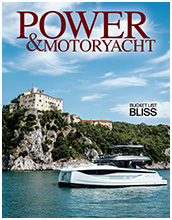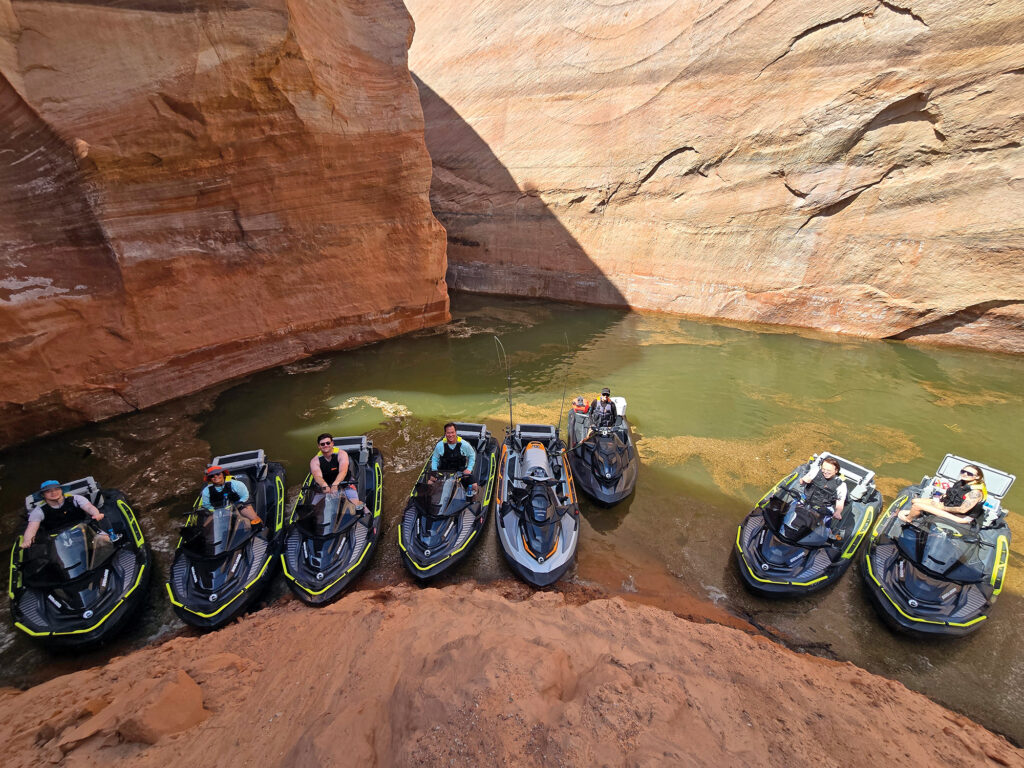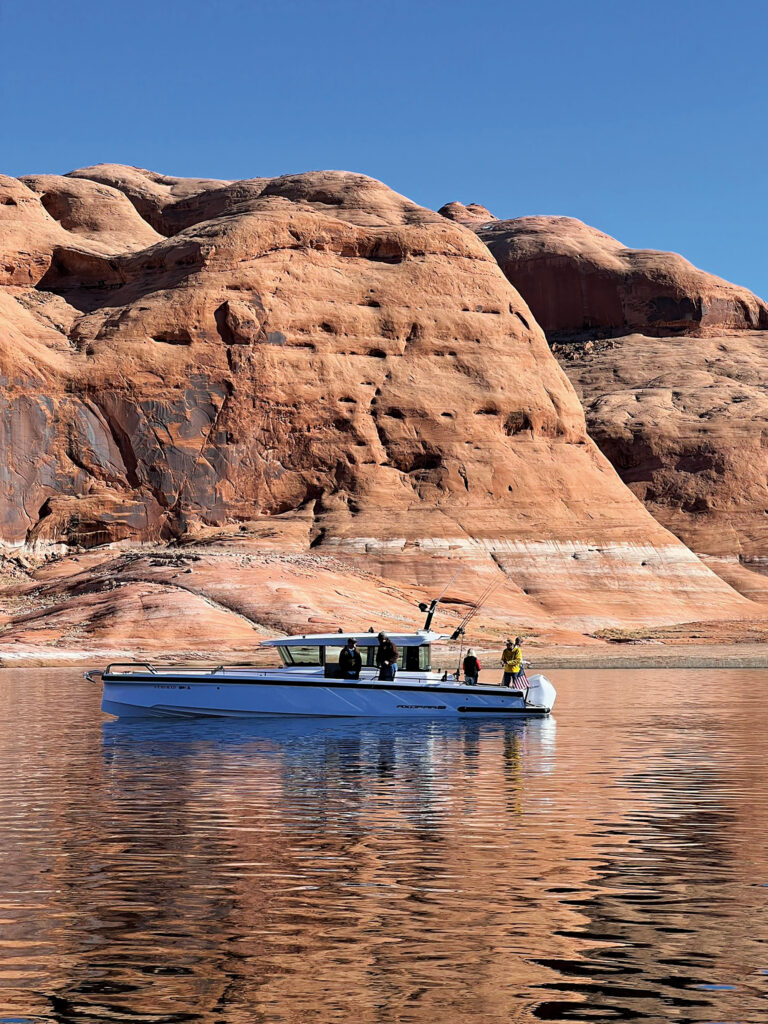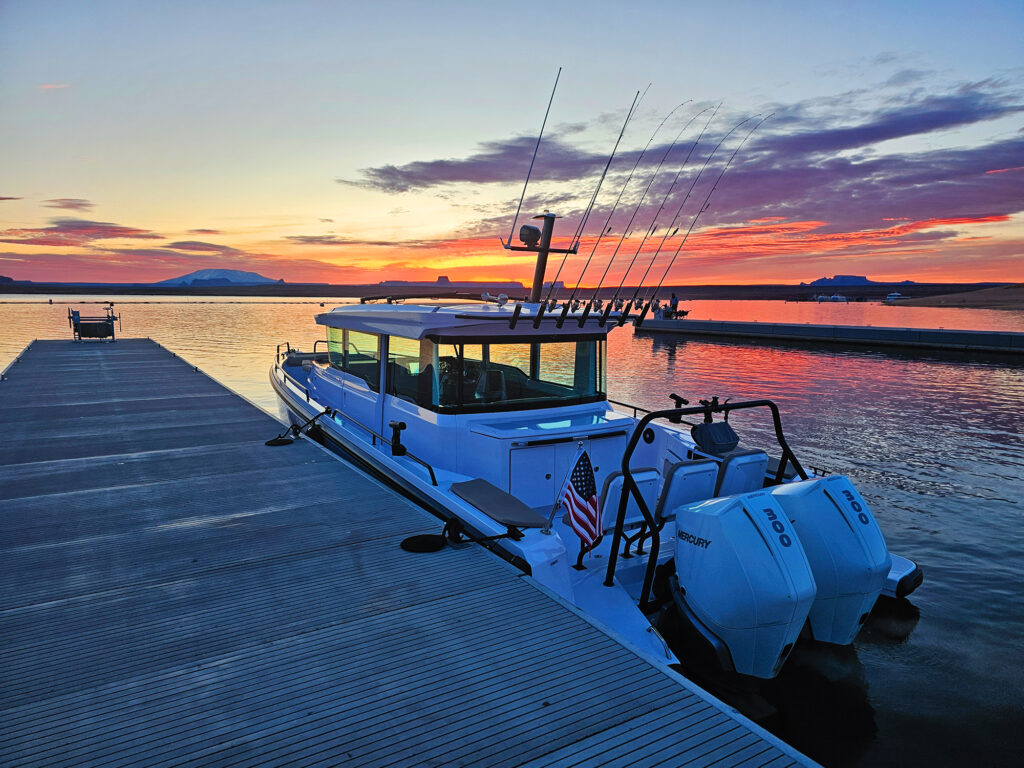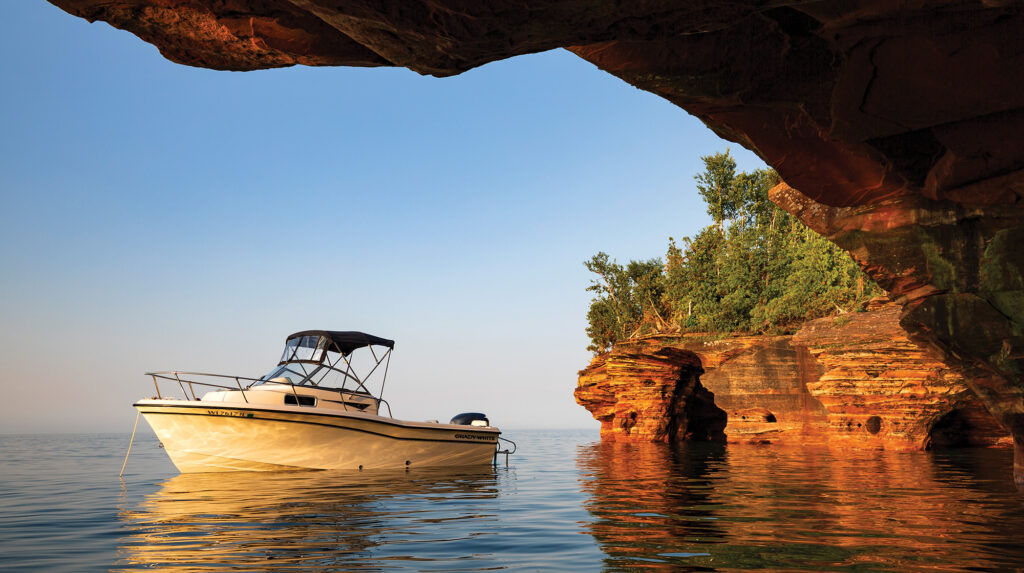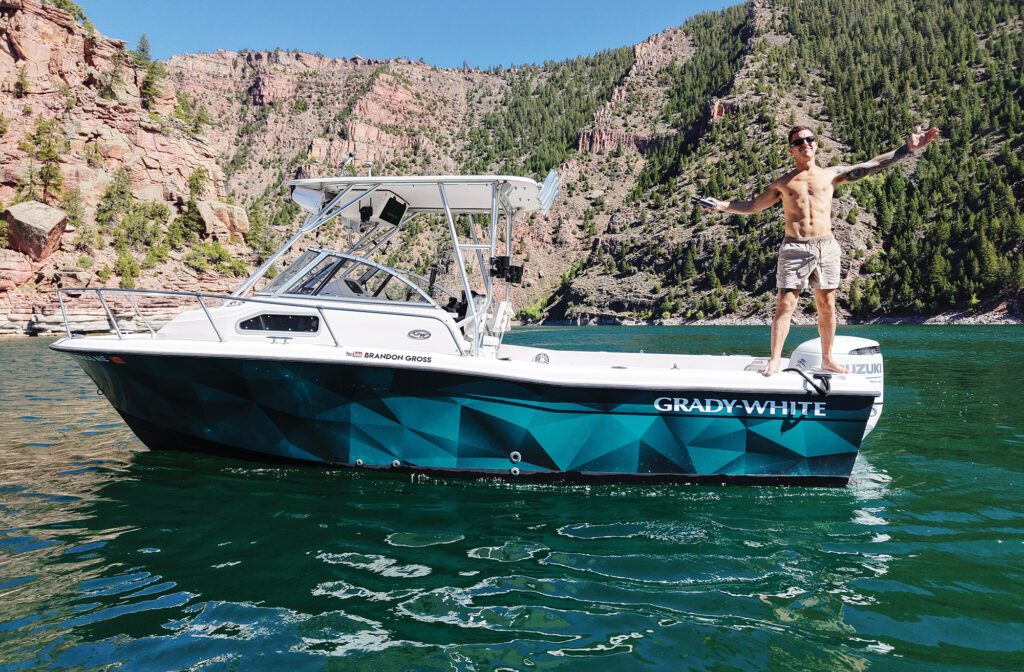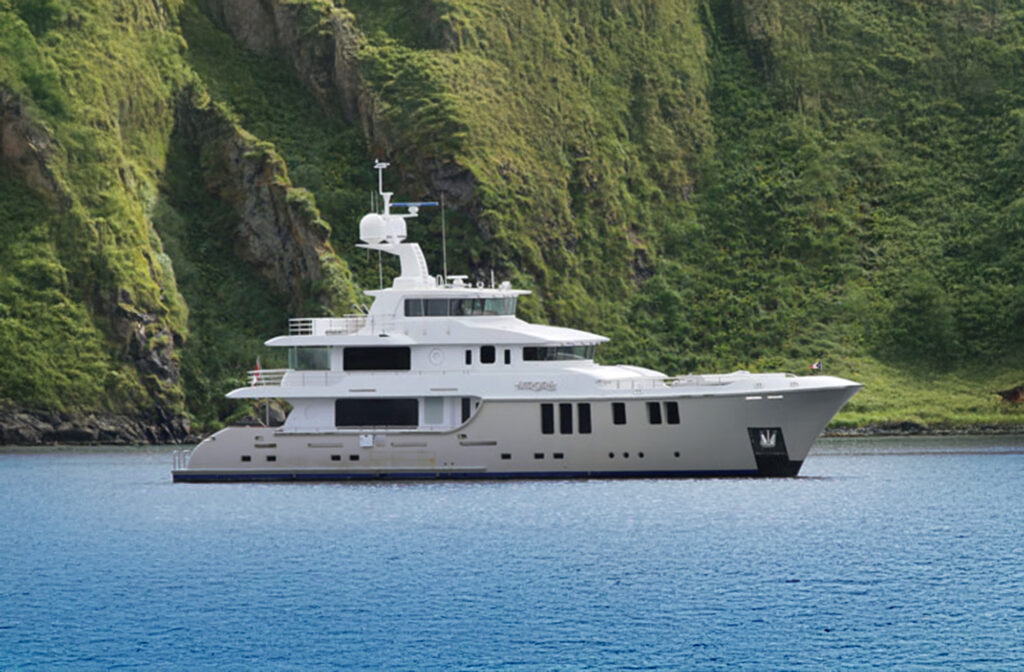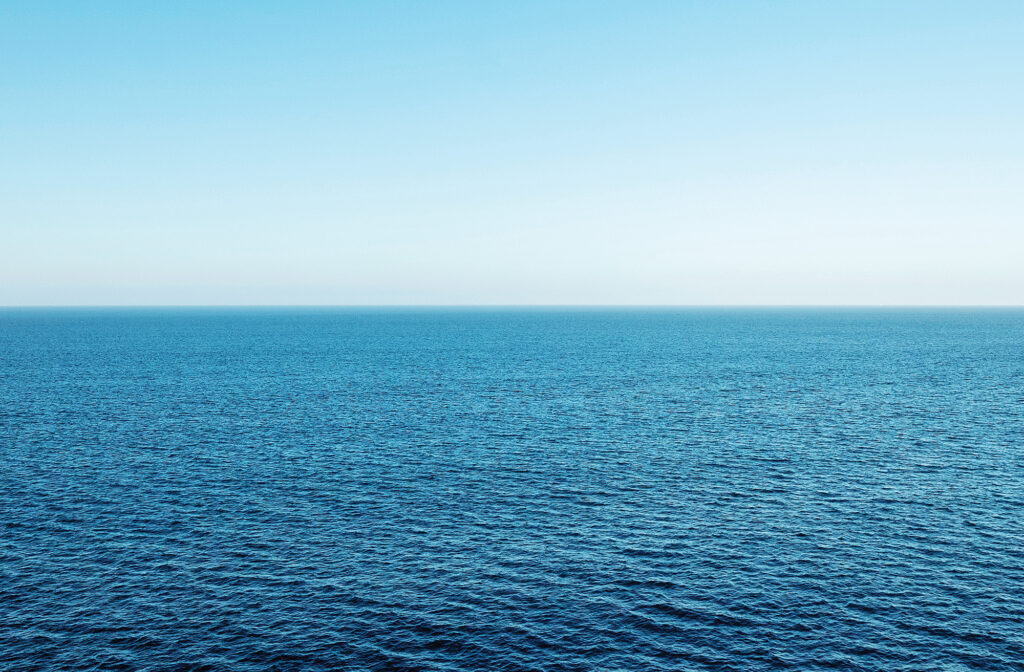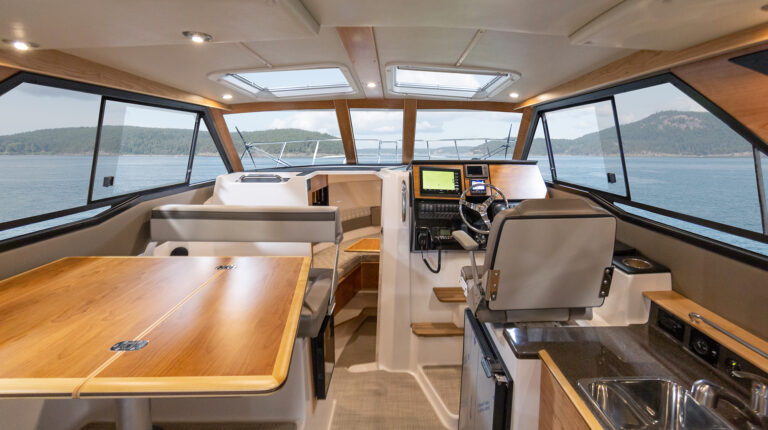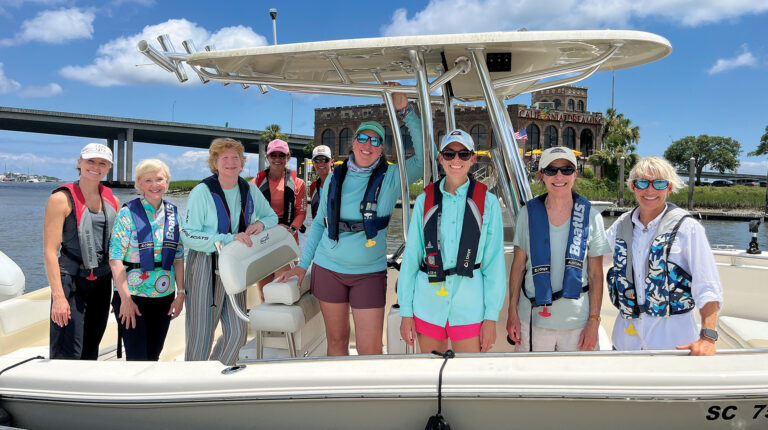When Axopar began drawing lines in Finland barely a decade ago, they couldn’t have possibly imagined the product of their imagination careening between the narrow, red-rock walls of Glen Canyon in the parched, triple-degree heat of the southwestern United States.
Indeed, the Utah shoreline of Lake Powell sounds, figuratively, more like a million miles (or lightyears) from the Scandinavian fjordlands—5,000 miles and half a world away, in actual fact—for which Jan-Erik Viitala first intended his designs. But as chance, fate, or some amalgam of the two would have it, an Axopar—in particular, a 37 XC Cross Cabin—would find itself right at home in the desert.
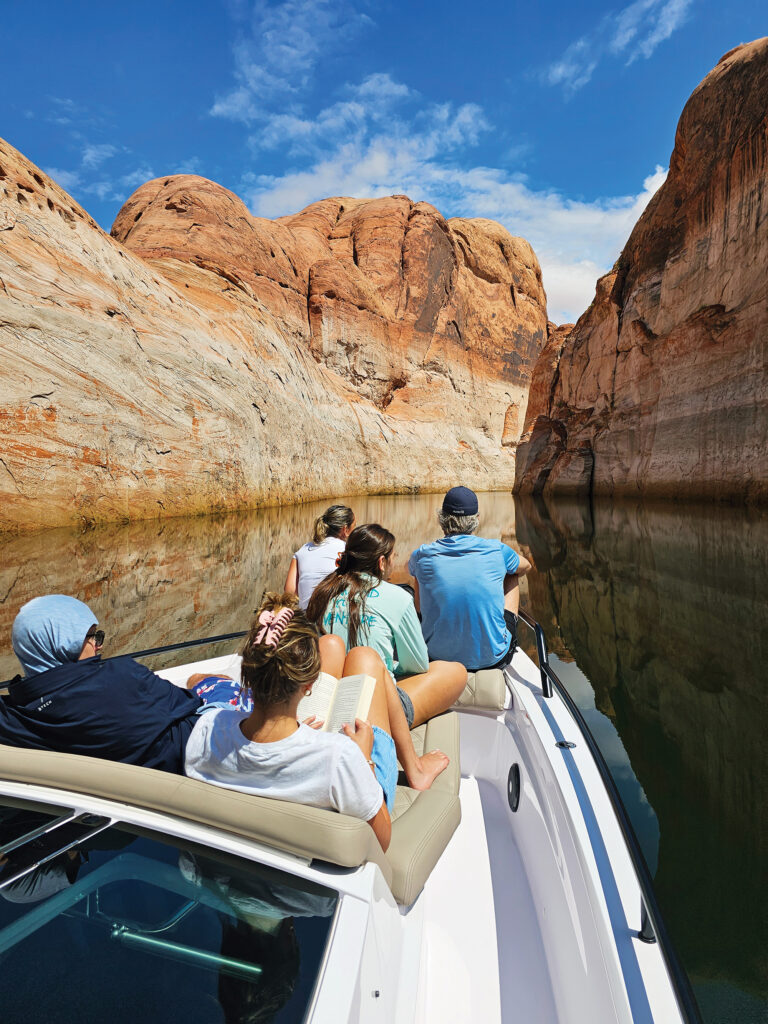
And at a closer glance, there should be no surprise why. Look at a topographical map, or better yet satellite imagery of Lake Powell. With towering walls encapsulating much of its narrow, lengthy expanse, it is—since being dammed in 1963, anyhow—a sort of inland, freshwater fjord.
Despite having hardly any annual precipitation to speak of and average temperatures ranging between 23 and 97 degrees Fahrenheit, the lake is nearly 200 miles long with just under 2,000 miles of shoreline and, at its fullest, is more than 500 feet deep at points. The ever-eroding rhapsody of bleach-white quartz and rose-pink to crimson-red Navajo sandstone through which the Colorado River cuts and wends its way in and out is, save for color, contour and rate of disintegration, not so unlike the U-shaped valleys running between the dark-hued sedimentary rock carved by glaciers in what is modern-day Finland and, more broadly, the Scandinavian fjords for which Axopar’s designs were brought to fruition.
Talk to Up Lake Adventures’ Captain Bob Reed—or any of the other 15 or so Axopar owners (by his estimation) on Lake Powell—and in short order, you may find yourself convinced that there’s no better vessel for that body of water. From 50-mile hauls to various fishing grounds, gorges and hiking routes fraught with tricky shorebounce to surf-boat wakes and high winds funneling between narrow, cavernous walls and massive temperature swings, Lake Powell favors a boat with legs—and societal comforts.
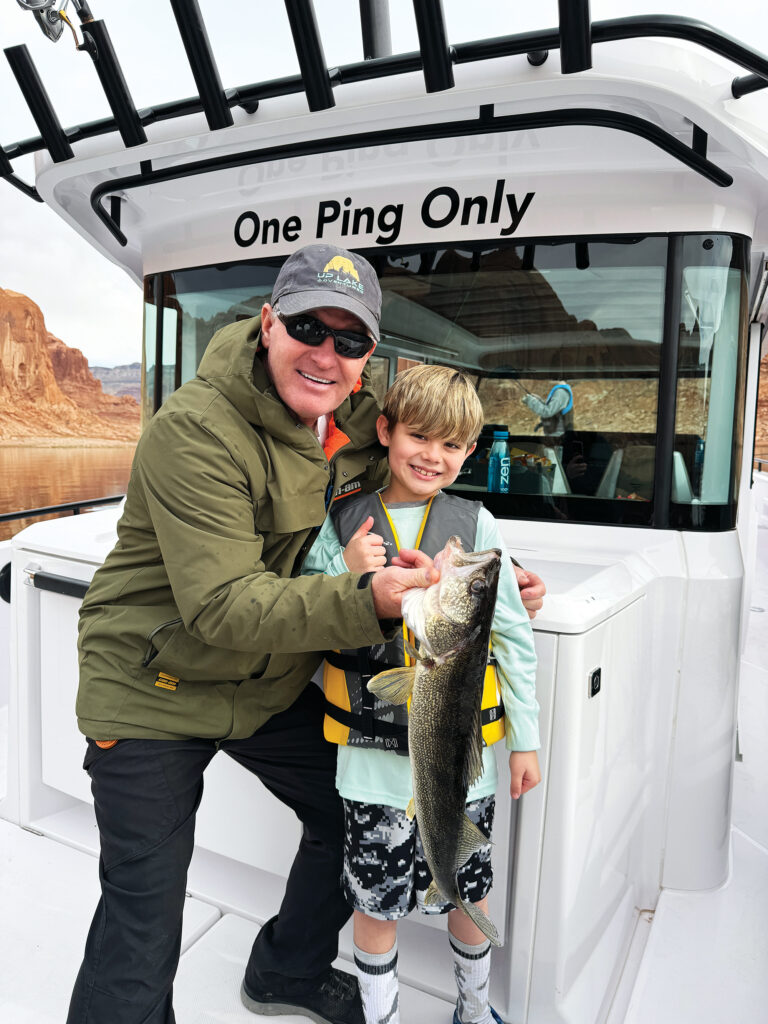
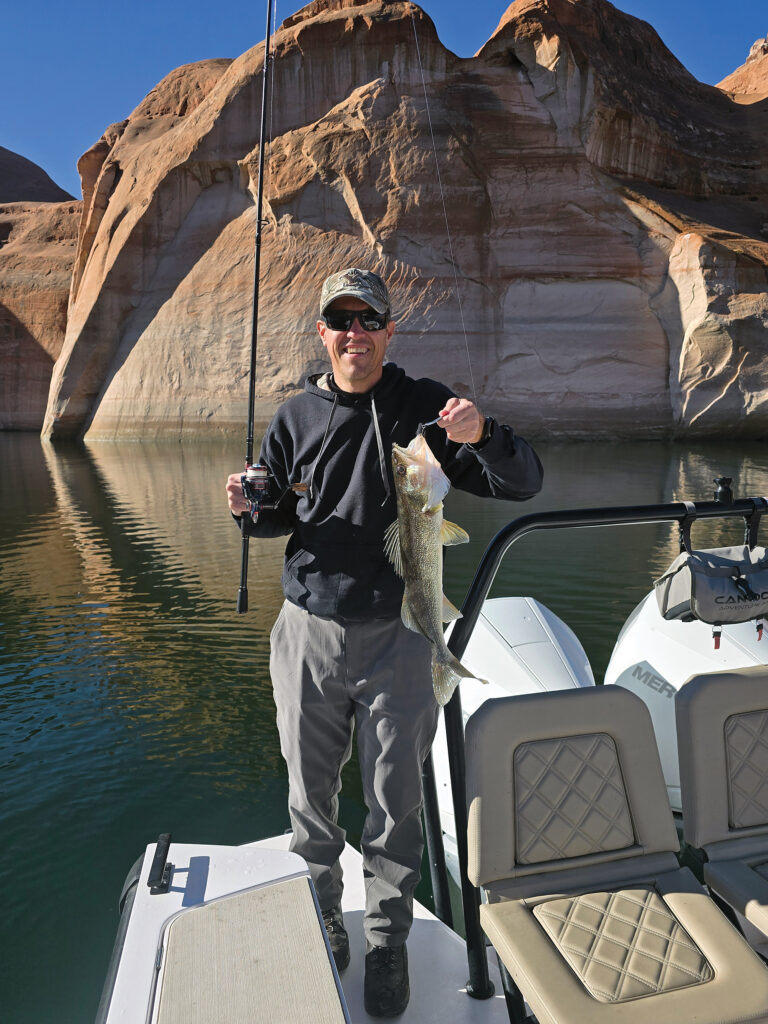

It might not be a 50-, 60-, or 100-mile jaunt through high seas out into the Gulf Stream, but a 1- to 2-hour trip on any boat, particularly a high-end charter service like Up Lake Adventures’, requires certain appointments that Capt. Reed says his Axopar 37 XC Cross Cabin, One Ping Only, brings in spades.
A dayboat with all of the accoutrements of an overnighter, One Ping Only is an express boat at heart, equipped for any and all excursions and working perfectly in tandem with his once-primary operation, running Sea-Doo tours of Glen Canyon.
“So I basically started seven years ago,” Reed, a former cabinetmaker, tells me with a reflective, vaguely telling grin. He couldn’t be happier, he says, with his purchase and, moreover, his change of occupation. Whatever high hopes he’d set out with have been surpassed and then some. “I was just doing guided fishing expeditions on Honda AquaTrax and then Sea-Doo Fish Pros. I did fishing, hiking and exploring on Lake Powell, camping overnight, everything on the Sea-Doos. It was amazing. And then I connected up with the local resort here that does a lot of experiences and things like that, and their clients kept asking for maybe a nicer vessel to go onto. So we found the Axopar and bought that [first one] a couple of years ago and have never looked back. The Axopar Cross Cabin 37 is probably the—well, not probably. It’s pretty much the most perfect boat for Lake Powell there ever was. It’s just great. And so now we do guided fishing on that, as well as hiking up the canyons, exploring and swimming.”
Fun as the Sea-Doo trips may be, and as much as they are the very genesis of his business, Reed can’t overstate the transformation brought on by the welcoming of the Axopar into his fleet: He reckons that about 70 percent of his charters are now aboard the Axopar, of which he is on his second in barely as many years. Now he often combines the two excursions.
“We’ll stage the Sea-Doos maybe 40 miles up the lake,” a bundled-up Reed told me from his Big Water, Utah office in January, “and then we’ll show up in the Axopar with our guests and they can get off and drive the Sea-Doos up around the canyons, then hop back on the boat and then we’ll finish the day that way. And that’s always a lot of fun.”
I can’t help but ponder the multitude of differences between a 100-mile desert run in an Axopar and, say, a more traditional fishing charter taking a sportfish out into the Gulf Stream for marlin or tuna. You have decidedly different clientele—and pressures. ‘You have to put a marlin in the boat,’ is about all a captain hears oneself saying in their head all day in the tuna tower. Meanwhile, guests are paying four figures to pitch, yaw and huff diesel fumes while groaning along in 10-foot swells with white caps coming across them. Views are limited to the swells, the horizon and not much else. There are no two ways about it: Those open-ocean excursions hinge on the fishing.
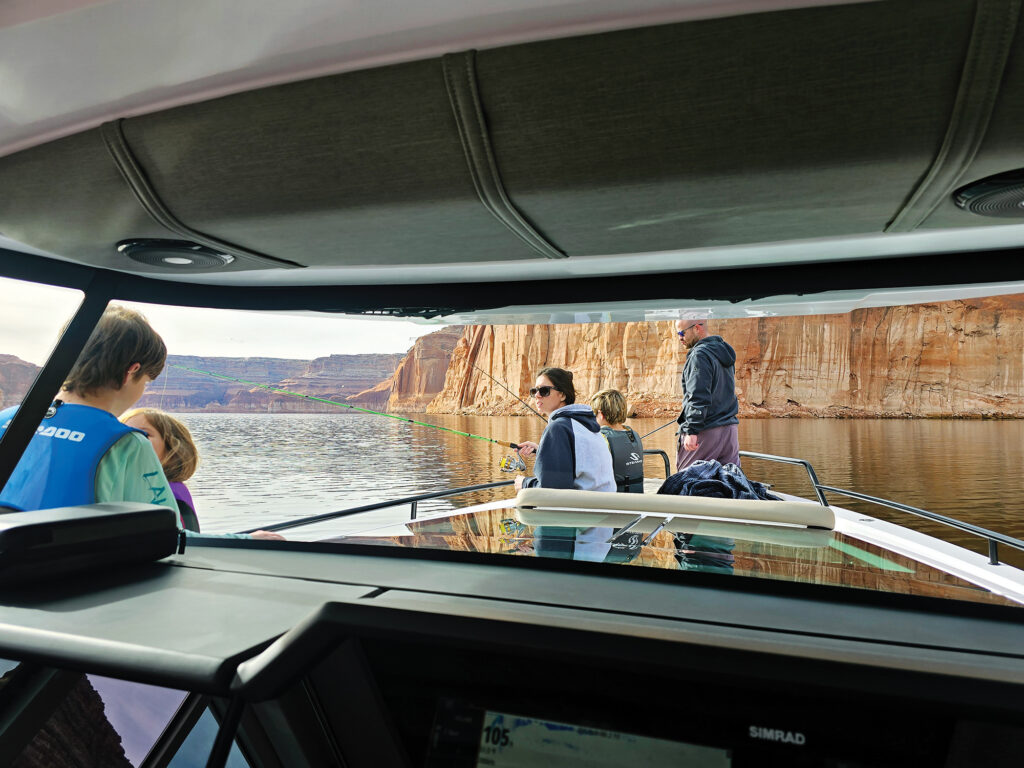
On Lake Powell, and specifically within Glen Canyon, guests are lounging in the bow, narrowly gliding between several-hundred-foot canyon walls, perhaps forgetting altogether that they’re en route to fishing, hiking or swimming grounds. It doesn’t resemble the monotonous, droning, hourslong haul out into a largely featureless sea. At the risk of sounding trite, the journey tends to supersede the destination. The fishing, or whatever the planned activity may be, becomes secondary, or even tertiary, to the original objective.
“That’s exactly what our clients tell us,” Reed says. “You come around every corner and it’s just something a little different. It’s kind of all the same, but it’s different. This canyon looks like this. This one’s got an arch, this one’s got a big alcove.”
And then there’s the water itself, which is clean, clear and pure enough to drink. “People have been on glass water. But until you’ve been at Lake Powell on glass, it’s hard to beat. We’re talking 17 miles going up the canyon and it’s a mirror from shore to shore. [Within] some of these canyons in the morning, there are no waves, there’s no wind, and it almost looks like you’re flying. You get a reflection of the clouds, the canyon walls. It’s really quite an experience. We put people on the bow, and we’ll just go really slow in those canyons and they’re taking video and pictures going, ‘Oh my gosh, oh my gosh, oh my gosh.’ They’ve never seen anything like that. They’ve been all over the world in any place you can imagine. A lot of wealthy people come here. So many times we’ve heard, ‘This is the most amazing place I’ve ever seen in my entire life, ever.’ And the Axopar makes that place so much more enjoyable because they can do that in comfort. 100-percent comfort, no matter the weather. We had 50-mile-an-hour winds last summer. Everybody else canceled on the lake. I said, ‘No, we can go.’ The Axopar handled it great. We got back up in the canyons where there was no wind, it was beautiful. It’s such a seaworthy vessel, I think it can handle pretty much anything this lake can throw at it. Other vessels, there’s no way. You wouldn’t dare go out there in that kind of weather.”
The fishing itself can be as obsessive or as casual as a client likes. “Sometimes we fish sun-up to sun-down,” Reed tells me, and either way, with minimal preparations relative to catching and rigging ballyhoo, it’s no fuss for him. On the other end of the spectrum? “You may pull over and have lunch and then the guy grabs a rod and just throws it over by a rock pile, three cranks of the reel and boom, he may only catch a 9-inch smallie, or maybe a 15-inch or 20-inch smallie, but it’s a fish. And it’s like, ‘oh my gosh, that is so much fun.’ And then the wife decides to try it and she catches one bigger and then the day’s made.”
Try that with a 6-pack charter out to the Hudson Canyon with a bunch of blood-thirsty tuna hounds, I think to myself.
Even on a lake with nearly 2,000 miles of shoreline—and even many inshore locales—there’s little sense in requiring much more in the way of fishing accommodations beyond the options available when commissioning an Axopar for a canyon charter. There’s a rocket launcher for six rods and two flush-mount (standard) in the stern quarters, an option for a livewell, and an open aft deck or small bench with a backrest that leaves plenty of room for a dance floor. Okay, not much room for outriggers or downriggers, and there’s no chance of piling on a flybridge, but the single-level walkaround deck leaves plenty of space for casting and soaking baits, which is more than most of us require whether we want to admit it or not. Me, I’d put up no protest taking the 37 out for a night of striper fishing by lake or sea.
But that’s beside the point, and far beyond me to have the gall to point my wavering finger in the direction of the “right” boat for any prospective buyer—that goes double for fishermen. I know better.
As for Up Lake Adventures, they’re not using bait, they’re not trolling, and they’re not getting as fastidiously technical as a bluewater outfit is expected to be. But they do require a certain versatility from a vessel: Apart from striped bass—which, by the way, are such a self-sustaining species on the lake that there’s neither a creel nor a size limit on them—there are also walleye, pike, largemouth and smallmouth bass and crappie in the sportfish category, as well as all of the various associated methods for catching each of those species within any given season or set of conditions. When not working spoons in 100 feet of water over striper schools, they’re prowling shallow banks, flats, and other forms of structure at a variety of depths and settings to the point where the 37 XC’s 3-foot draft comes in handy.
“The boat does it all,” Reed tells me—he is a good salesman for Axopar whether he intends to be or not. Case in point: He has inadvertently led not one but two clients to commission their own Axopars, one mid-charter, on the spot.
Speaking more to the comfort factor: “People say, well, is it hot in the summer? Yeah, it’s 95 degrees or 100 degrees, but there’s 6-percent humidity, so there’s not that to deal with. We got the A/C, which—I’ll be honest with you—does pretty good, but we had a couple days this last year, it was like 107 and it was brutally hot. We were probably in the 80s in the cabin, which was still good. It gets you out of the sun and it was fine, but it does struggle a little bit on those really, really, really hot days.” Most boaters in Scandinavia probably don’t demand much if anything of an A/C unit. But herein lies more of the beauty of canyons and fjords: “When you get too hot, you go into the shade and you feel 20 degrees cooler.”
Conversely, Reed says, when the mercury’s down to the dregs, “We can always get out of the shade.” And the heating, as you might expect of a Scandinavian design—there are lithium-ion-, diesel- and kerosene-powered options—is up to the task.
“We were up yesterday on the lake,” Reed says of a striped bass charter group of five. “I think we did about 117 miles yesterday, and we never saw another boat the entire day. It was 18 degrees when we left in the morning, and we were warm and toasty in the cabin. It warmed up to about 45 and then we caught a bunch of fish—we caught 120 fish or so, came back—a very successful day, but wouldn’t be possible with that kind of comfort without the Axopar.”
I ask Reed whether he thinks he may add another to his fleet, having already retired one in favor of a newer model and, apparently being so smitten—and busy, even in midwinter. “Next year,” he tells me with near certainty. Will he order a different boat or change the layout to some degree? “Not a thing,” he answers, apart from swapping out some of the 200 feet of anchor chain for line to help keep scope and swinging to a minimum—at certain anchorages, there’s only so much room to swing between canyon walls—and maybe a passerelle off the bow for easing guests on and off. After a short pause, his tone rises with a bit of an inflection: “We’ve talked about a 45.”
Listen to Owen’s conversation with Captain Bob Reed here ▶

